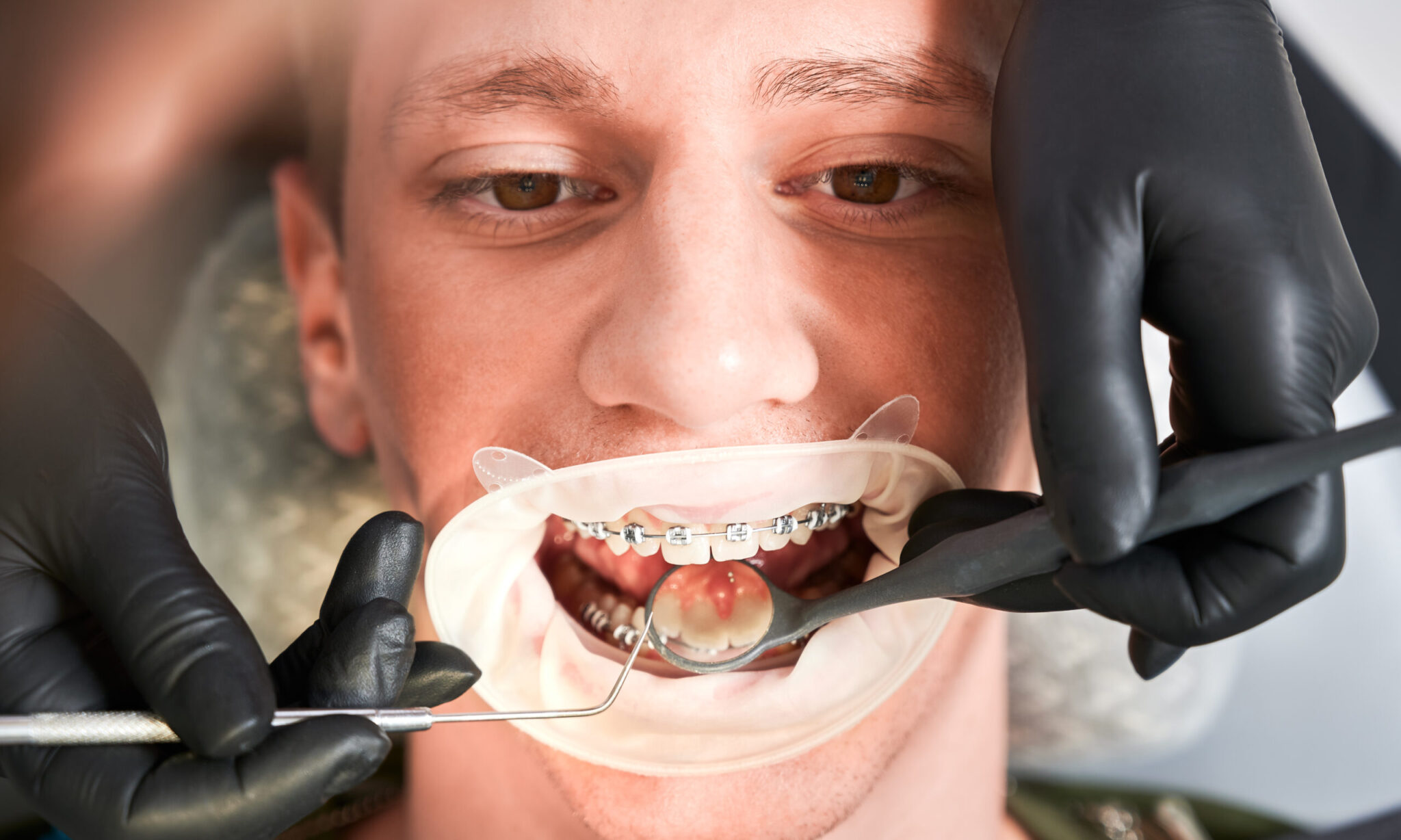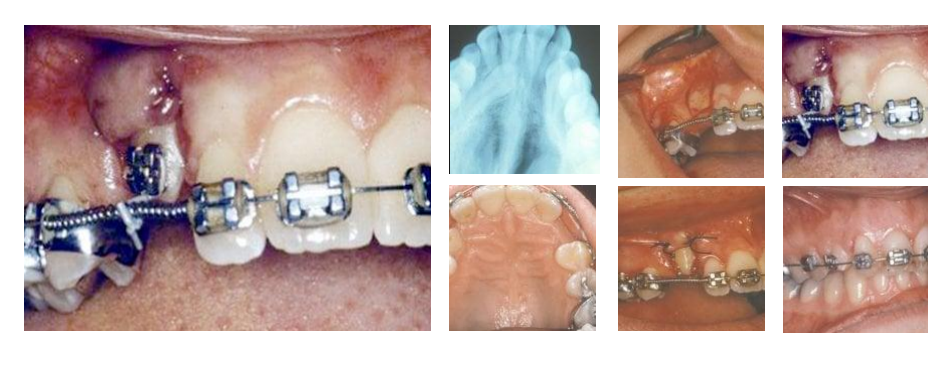- Fayetteville: (770) 471-4196
- Griffin: (770) 228-1010

An impacted tooth simply means that it is stuck and cannot erupt into function. Patients frequently develop problems with impacted third molar (wisdom) teeth. These teeth get stuck in the back of the jaw and can develop painful infections among a host of other problems. Since there is rarely a functional need for wisdom teeth, they are usually extracted if they develop problems. The maxillary cuspid (upper eyetooth) is the second most common tooth to become impacted. The cuspid tooth is the most critical tooth in the dental arch and plays an important role in your bite. The cuspid teeth are very strong biting teeth and have the longest roots of any human teeth. They are designed to be the first teeth that touch when your jaws close together so they guide the rest of the teeth into the proper bite.
Normally, the maxillary cuspid teeth are the last of the front teeth to erupt into place. They usually come into place around age 13 and cause any space left between the upper front teeth to close tighter together. If a cuspid tooth gets impacted, every effort is made to get it to erupt into its proper position in the dental arch. The techniques involved to aid eruption can be applied to any impacted tooth in the upper or lower jaw.
Early Recognition Of Impacted Eyetooth Is The Key To Successful Treatment
The older the patient, the more likely an impacted eyetooth will not erupt by nature’s forces alone, even if the space is available for the tooth to fit in the dental arch. The American Association of Orthodontists recommends that a panorex screening x-ray, along with a dental examination, be performed on all dental patients at around the age of seven years to count the teeth and determine if there are problems with eruption of the adult teeth. It is important to determine whether all the adult teeth are present or are some adult teeth missing. Are there extra teeth present or unusual growths that are blocking the eruption of the eyetooth? Is there extreme crowding or too little space available causing an eruption problem with the eyetooth? This exam is usually performed by your general dentist or hygienist who will refer you to an orthodontist if a problem is identified.
Treating such a problem may involve an Orthodontist placing braces to open spaces to allow for proper eruption of the adult teeth. Treatment may also require referral to an Oral Surgeon for extraction of over-retained baby teeth and/or selected adult teeth that are blocking the eruption of the all-important eyeteeth. The Oral Surgeon will also need to remove any extra teeth or growths that are blocking eruption of any of the adult teeth. If the eruption path is cleared and the space is opened up by age 11-12, there is a good chance the impacted eyetooth will erupt with nature’s help alone. If the eyetooth is allowed to develop too much (age 13-14), the impacted eyetooth will not erupt by itself even with the space cleared for its eruption. If the patient is too old (over 40), there is a much higher chance the tooth will be fused in position. In these cases the tooth will not budge despite all the efforts of the orthodontist and oral surgeon to erupt it into place.
Sadly, the only option at this point is to extract the impacted tooth and consider analternate treatment to replace it in the dental arch (dental implant or bridge).
What Happens If The Eyetooth Will Not Erupt When Proper Space Is Available?
Each case must be evaluated on an individual basis but treatment will usually involve a combined effort between the Orthodontist and the Oral Surgeon. The most common scenario will call for the Orthodontist to place braces on the teeth (at least the upper arch). A space will be opened to provide room for the impacted tooth to be moved into its proper position in the dental arch. If the baby eyetooth has not fallen out already, it is usually left in place until the space for the adult eyetooth is ready. Once the space is ready, the Orthodontist will refer the patient to the Oral Surgeon to have the impacted eyetooth exposed and bracketed.
In a simple surgical procedure performed in the surgeon’s office, the gum on top of the impacted tooth will be lifted up to expose the hidden tooth underneath. If there is a baby tooth present, it will be removed at the same time. Once the tooth is exposed, the Oral Surgeon will bond an orthodontic bracket to the exposed tooth. The bracket will have a miniature gold chain attached to it.
Shortly after surgery (1-14 days) the patient will return to the Orthodontist. A rubber band will be attached to the chain to put a light pulling force on the impacted tooth. This will begin the process of moving the tooth into its proper place in the dental arch. This is a carefully controlled, slow process that may take up to a full year to complete.
Remember, the goal is to erupt the impacted tooth and not to extract it ! Your Orthodontist & Oral Surgeon will explain this situation to you if it applies to your specific situation.
Exposure and Bracketing of an Impacted Cuspid

What To Expect From Surgery To Expose & Bracket An Impacted Tooth?
The surgery to expose and bracket an impacted tooth is a very straightforward surgical procedure that is performed in the Oral Surgeon’s office. For most patients, it is performed under IV sedation. These specifics will be discussed in detail at your preoperative consultation with your Surgeon.
You can expect a limited amount of bleeding from the surgical site after surgery.
Although there will be some discomfort after surgery at the surgical site, most patients find Tylenol or Advil to be more than adequate to manage any pain they may have. Within two to three days after surgery, there is usually little need for any medication at all. There may be some swelling from holding the lip up to visualize the surgical site; it can be minimized by applying ice packs to the lip for the afternoon after surgery. Bruising is not a common finding after these cases.
A soft, bland diet is recommended at first, but you may resume your normal diet as soon as you feel comfortable chewing.
It is advised that you avoid sharp food items like crackers and chips as they will irritate the surgical site if they jab the wound during initial healing. You should plan to see your Orthodontist at 10-14 days to activate the eruption process by applying the proper rubber band to the chain on your tooth. If your bracket should come unglued or loose, make sure you save it to be replaced. Simply call us today if you have any questions.